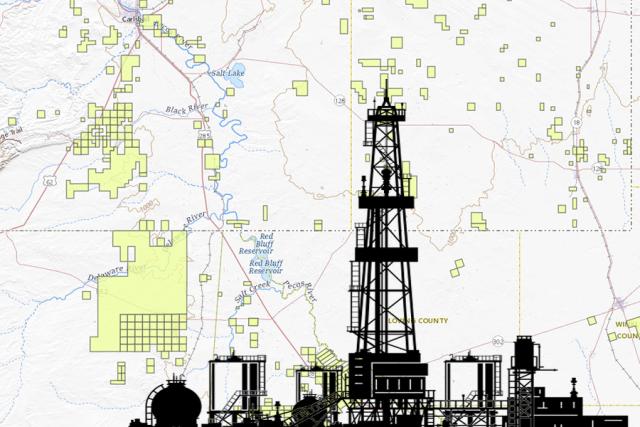
(Source: Hart Energy)
The Harkey Mills sandstone is adding new-well inventory to northern Delaware Basin operators’ portfolios, showing production just as prolific as its stratigraphic neighbors, the Bone Spring and Wolfcamp.
Sitting between the second and third Bone Spring, overlying the Wolfcamp, the “low-stand submarine fan deposit” has seen laterals dating back more than a decade, according to Marshall D. Davis, whose master’s thesis in 2014 was based on the Harkey.
“We love the Harkey,” Tom Jorden, Coterra Energy chairman, CEO and president, told securities analysts this spring. The development approach to it in its Culberson County, Texas, leasehold is “variable,” he added. “It’s not a ‘one size fits all.’ So, around the basin, it’s going to vary.
“But in a lot of our position, it competes very nicely with Wolfcamp.”
Coterra is landing Harkey wells as it continues to examine how to develop it. “We’ve got a lot of Harkey in our program,” he said. “I think we’ll continue with that. And it depends on where you are. There are places where it’s right on top of the Wolfcamp; there are places where it’s a little lower than the Wolfcamp.
“But it’s one of the best landing zones in the basin. I’ll say that flat out.”
Davis wrote his thesis, “Petroleum Geology of the Leonardian Age, Harkey Mills Sandstone: A New Horizontal Target in the Permian Bone Spring Formation, Eddy and Lea Counties, Southeast New Mexico,” while studying at the University of Texas at Arlington. He was working at the Bass family’s Bopco LP at the time and cited its data in his research. Exxon Mobil purchased Bopco for $6.6 billion in cash and stock in 2017, gaining 275,000 acres, with 250,000 of those in the Permian.
Davis reported that four horizontals in the Harkey in Eddy County produced 176,000 bbl of oil and 708 Mcf combined during three years online.
As to interference, Jorden told analysts in other, recent calls that “when it comes to the Wolfcamp and Harkey, we generally see that as one petroleum system.”
Thus, there will be some communication. “But we do not see that as a factor that degrades overall well productivity.”
Findings to date are that “having the two landing zones does not interrupt or impede your overall recovery out of that drilling spacing unit. So, we don’t see that as a significant issue for the Wolfcamp/Harkey.”
Erin Faulkner, an Enverus analyst, reported in April that Coterra’s 2022 Harkey/Wolfcamp test consisted of four in Harkey on 1,320-foot spacing with eight in the upper Wolfcamp on 700-foot spacing.
“The company was pleased with the results and anticipates that future Wolfcamp/Harkey co-developments with 10,100-foot laterals will pay out in six months at $75 [oil] and $3.50 [gas].”
A Coterra test that’s expected to come online later this year consists of nine Wolfcamp wells and four Harkey, she added.
Jorden told analysts that “the Harkey is excellent compared to the Wolfcamp. I mean, they’re neck and neck.”
He added, “If you had to choose between really great Wolfcamp A or Harkey, it’d be like asking which one of your kids you like best. It’s a really tough choice.”
Overall, the Harkey may add about five years to Coterra’s top-tier inventory. “Harkey is terrific,” Jorden said. “… Harkey stands shoulder to shoulder with the best of our landing zones. And we think we have a lot to do in the upcoming years.”
Earthstone Energy is also landing in Harkey, it reported. Two wells in Lea County, N.M., averaged some 1,600 boe/d each, 87% oil, in their first 24 days online from 7,500-foot laterals. It expected payout within four months from first production.
Randy Nickerson, Caza Petroleum’s COO, told Hart Energy in 2019 that Eddy County’s Harkey “is a little more highly oil saturated than the other [zones].
“I think you’re going to see that’s going to be a new bench out there that people are going to start building. There are some older wells on it that maybe discourage people, but it’s a pretty good zone.”
Davis’ analysis of 625 old, vertical wells found “the best reservoir rock occurs within the apex of turbidite channel deposits proximal to the slope fan.” Net thickness is up to 80 feet; porosity, at least 8%.
Recommended Reading
TXOGA Supports Ruling to Pause Biden’s Pause
2024-07-02 - The Texas Oil & Gas Association (TXOGA), the oldest and largest oil and gas trade association in Texas, sided with a Louisiana judge’s ruling to pause U.S. President Joe Biden’s pause of LNG permits.
Shell Trinidad Takes FID at Manatee Offshore Gas Field
2024-07-09 - Shell Trinidad and Tobago Ltd. has taken FID on the Manatee cross-border gas field. Manatee will start production in 2027 and at its peak add 104,000 boe/d or 604 MMcf/d of natural gas to Trinidad’s production profile.
Saudi Aramco Holding LNG Talks with US Firms Tellurian, NextDecade, Sources Say
2024-06-04 - Oil giant Aramco is in talks with Tellurian to buy a stake in the Driftwood LNG plant near Lake Charles, Louisiana.
Zachry Proposes Settlement Agreement to End Golden Pass LNG Standoff
2024-07-22 - Zachry, an engineering contractor for the Golden Pass LNG project, submitted a settlement agreement in bankruptcy court that would allow Exxon Mobil and QatarEnergy to move forward with the delayed project.
FERC Re-affirms Tellurian Extension Request for Driftwood LNG
2024-07-09 - The Federal Energy Regulatory Commission upheld its earlier decision following the Sierra Club’s request for another hearing on Driftwood LNG’s 2029 completion date.





